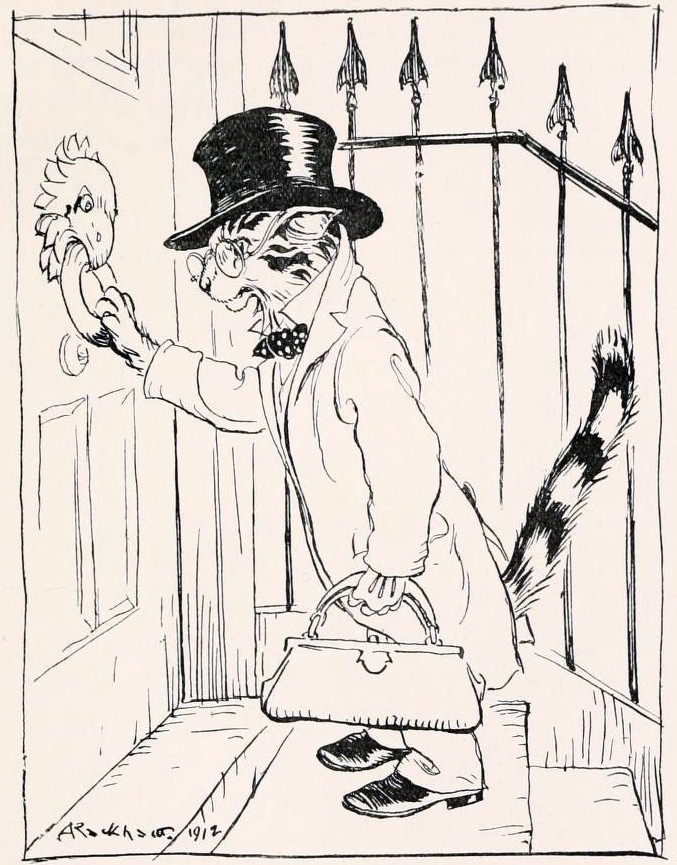I'm working through the poems book by book with indexes to each of the individual fables; this is the post for Book 2.
For each book, I am picking out one very short poem as the focus. So, you'll find a poem-by-poem index to Book 2 below (linking to the pages at the Internet Archive), and here's the poem I selected from that book, just 4 lines long; just 3 lines long if you omit the moral at the end which is more of a label than a moral. This is a fable that Desbillons adapted from the great Renaissance fabulist, Abstemius, and it resembles the classical type of fable with a faux-doctor where the patient makes a witty reply to the hypocritical visitor (see "Doctor Cat" below):
II.32 Equus AEgrotans et Canis
Equus aegrotabat; mandere assuetus canis
Projecta cadavera adiit hunc et quaesiit
quomodo se haberet. "Melius" inquit "quam velis."
Fabula ad avarum spectat heredum genus.
Here is the poem written out in English prose order to help in reading:
Equus aegrotabat.
Canis,
assuetus mandere projecta cadavera,
adiit hunc
et quaesiit
quomodo [equus] se haberet.
[Equus] inquit,
"Melius quam velis."
Fabula spectat ad avarum genus heredum.
Watch out for the verb mandere; this is a later Latin word, synonymous with manducare, and it means "to eat" (literally, "to chew"); compare Italian mangiare, French manger, etc.
The meter is iambic, and here is some help with the meter (for more about iambic meter, see the post about Desbillons 1.19).
Equus ae · grota · bat: man · der~ as · suetus · Canis
Proiec · ta cada · ver~ adi · it hunc · et quae · siit,
Quomodo · s~ habe · ret: Meli · us in · quit quam · velis.
Fabul~ ad · ava · rum spec · tat he · redum · genus.
Since this is not a classical fable, I don't have a specific illustration for it, but the theme resembles Dr. Cat visiting the Chickens, so here's an illustration by Arthur Rackham to go with that classical fable:
Since this is not a classical fable, I don't have a specific illustration for it, but the theme resembles Dr. Cat visiting the Chickens, so here's an illustration by Arthur Rackham to go with that classical fable:
A Cat heard that the Birds in an aviary were ailing. So he got himself up as a doctor, and, taking with him a set of the instruments proper to his profession, presented himself at the door, and inquired after the health of the Birds. "We shall do very well," they replied, without letting him in, "when we've seen the last of you."


More poems in Desbillons, Book 2:
1. malus exspoliata (lines: 10)
2. cervus et hinnuleus (lines: 12)
3. lepores et ranae (lines: 14)
4. vulpecula et gallina (lines: 6)
5. testudo et aquila (lines: 9)
6. puer et agricolae (lines: 8)
7. bubulcus et leo (lines: 13)
8. grues et anseres (lines: 7)
9. mula (lines: 10)
10. mors et rusticus (lines: 20+)
11. mors et rusticus (lines: 5)
12. agricola et filii eius (lines: 17)
13. tauri quattuor et leo (lines: 8)
14. lupus et ovis (lines: 9)
15. gallina ova pariens ova (lines: 5)
16. lupus et anicula (lines: 12)
17. ovis et cornicula (lines: 6)
18. asellus et equus (lines: 11)
19. leo et capra (lines: 7)
20. leo senex et vulpis (lines: 17)
21. fringuilla (lines: 9)
22. ranae duae (lines: 10)
23. cerva, venator et leo (lines: 5)
24. formica et columba (lines: 14)
25. apes et ipsarum dominus (lines: 14)
26. asinus silvestris et asinus domesticus (lines: 16)
27. mus in cista natus (lines: 17)
28. milvus et agricola (lines: 5)
29. femina mortem pro marito appetens (lines: 11)
30. asinus, simia, et talpa (lines: 7)
31. lupus et hystrix (lines: 15)
32. equus aegrotans et canis (lines: 4)
33. vir eruditus et trossulus (lines: 9)
34. canis infidelis et pastor (lines: 18)
35. Lucius late regnandi cupidus (lines: 21)
36. asellus viridis (lines: 8)
37. leo et rana (lines: 6)
38. agricola et Fortuna (lines: 11)
39. tulipa (lines: 15)
40. pueri et ranae (lines: 9)
41. pisces (lines: 6)
42. puer et coluber (lines: 7)
43. rosa et amarantus (lines: 5)
44. canis et herus (lines: 10)
45. piscis volans (lines: 14)
